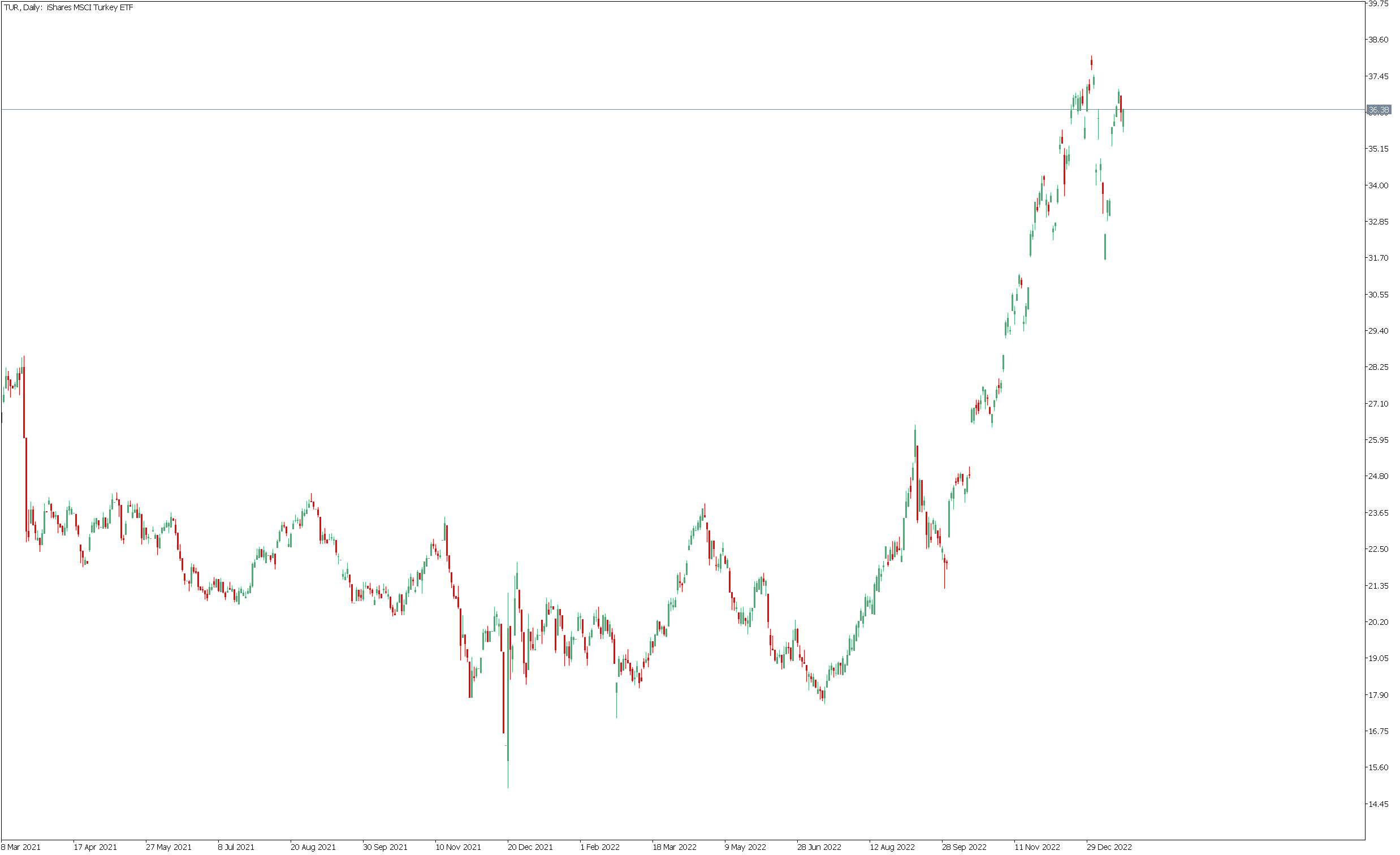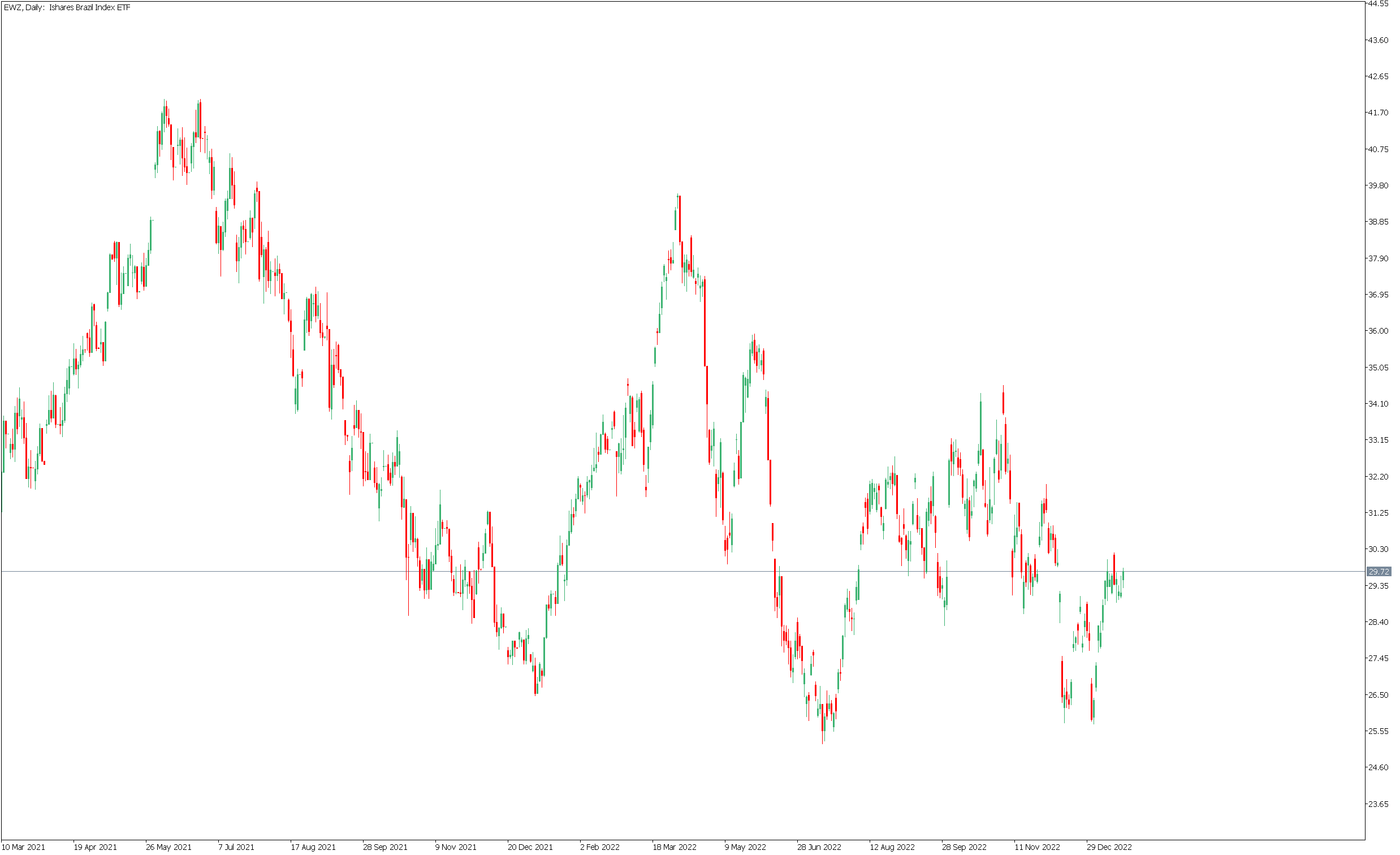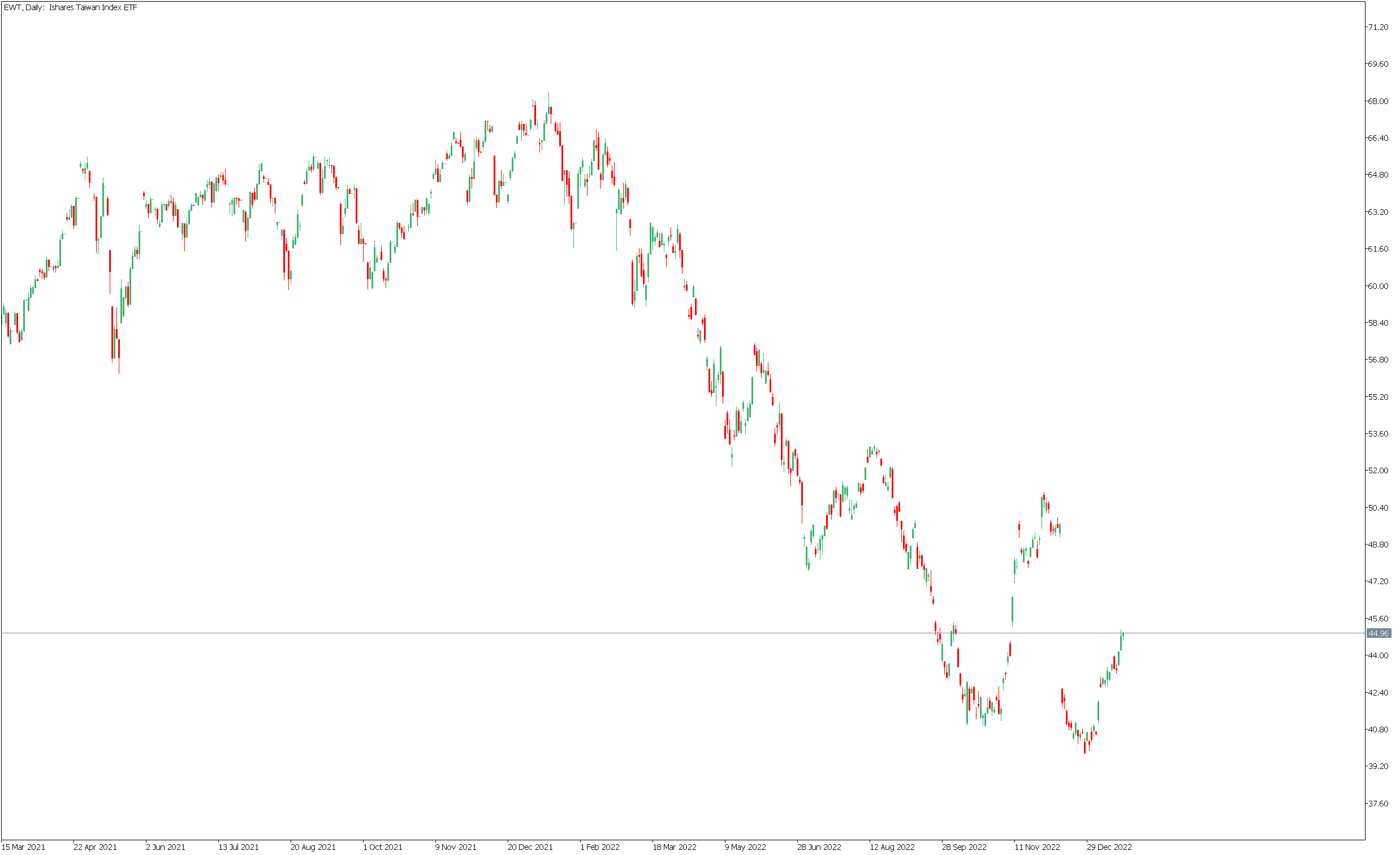2022 may have been a tough year for global investors. However, not all major markets ended it on a negative note. Which ones and how did they gain the most? Which, in turn, have the potential to dominate in 2023? Today we seek answers to these questions.
What has driven the economies of the world?
Over the past year, it seems that most central bank decisions were made in response to rising inflation. One of the record-breakers in this field was Turkey, which achieved CPI price growth of 84.4 per cent. Despite this, the Turkish central bank cut interest rates from 14 per cent to 9 per cent over the course of the year. GDP growth, in turn, fell from around 7 per cent to 3.9 per cent. These conditions seem to have led to a weakening of the Turkish lira, which lost more than 47 per cent against the US dollar. This is an interesting case in that, despite this seemingly extremely negative economic data, the iShares MSCI Turkey ETF (TUR) was trading in US dollar terms up over 90 per cent. It was one of the strongest growing domestic markets in the world.
In economics, this is the phenomenon of so-called galloping inflation or even hyperinflation. In both cases, it is a noticeable phenomenon that stock prices are rising faster than price dynamics. An example of such an economy could be found in Venezuela, which experienced inflation of as much as 35,000 per cent in 2019, during which time the Caracas index rose by more than 97,000 per cent. However, it is difficult to determine from what level of inflation we could expect such sharp increases in asset prices. Many economists assume here that the threshold of 20 per cent is exceeded. However, it seems that more important than what level of inflation we have is its cause. This could be caused, for example, by printing "empty" money, i.e. money that is not backed by any goods.

Source: Conotoxia MT5, TUR, Daily
For such a high rate of return to hold for Turkish equities, inflation would have to continue to rise at a similar rate. Currently, however, inflation in Turkey has fallen to nine-month lows at 64.3 per cent. This could be related to a warming fuel market and a slowdown in the domestic market, which has led to a decline in domestic demand in this economy.
America is not just the United States
The US is currently the world's largest market. According to Statista data, it accounts for as much as 59.9 percent of the value of global equities. It turns out that of the four largest markets in the Americas: US, Canada, Mexico and Brazil, it was US equities that performed the worst. The S&P 500 index (US500) was down 20 percent, and the only one of these four markets to make a positive return was Brazil. The iShares MSCI Brazil ETF (EWZ) was up 2.2 per cent, which could be linked to record revenues from the sale of coffee, of which Brazil is the world's largest producer. Arabica coffee revenue growth was 39 per cent, with a favourable exchange rate being the main reason for the increase. Moreover, CPI inflation in 2022 was on a downward trend in Brazil, from 12 to 6 per cent. Despite this, Brazil's central bank maintains high interest rates, at 14 per cent.

Source: Conotoxia MT5, EWZ, Daily
The future of Brazil's economy may depend on, among other things, coffee, the price of which has fallen by more than 40 per cent in the past year. The market may therefore experience a greater slowdown.
Asia and Oceania give light to the future
The average decline for the seven major markets in Asia and Oceania was 19 per cent in 2022. The Taiwanese market lost the most, suffering a discount of 40 per cent, while the Malaysian stock market performed best, falling by less than 9 per cent. In particular, the former appears to be linked to the slowdown in this market, which is one of the largest providers of high-tech and microchips worldwide. Taiwan's economy reported a 0.86 per cent year-on-year decline in Q4 GDP, compared to a previous growth of 4 per cent year-on-year. It seems that the demand for high-end technology is not keeping pace with the global slowdown. Nevertheless, in the event of a scenario of major economies emerging from recession, this market may have one of the greatest potentials for growth.

Source: Conotoxia MT5, EWT, Daily
Grzegorz Dróżdż, Market Analyst of Conotoxia Ltd. (Conotoxia investment service)
Materials, analysis and opinions contained, referenced or provided herein are intended solely for informational and educational purposes. Personal opinion of the author does not represent and should not be constructed as a statement or an investment advice made by Conotoxia Ltd. All indiscriminate reliance on illustrative or informational materials may lead to losses. Past performance is not a reliable indicator of future results.
CFDs are complex instruments and come with a high risk of losing money rapidly due to leverage. 76,41% of retail investor accounts lose money when trading CFDs with this provider. You should consider whether you understand how CFDs work and whether you can afford to take the high risk of losing your money.


